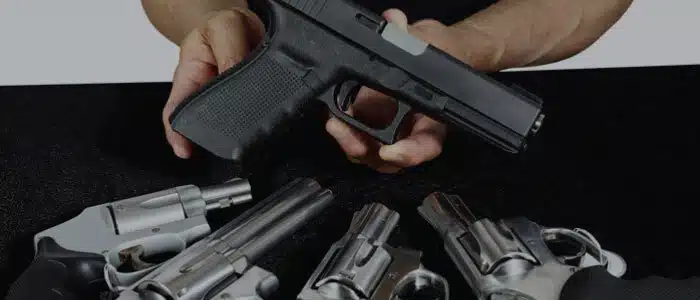A Practical Guide on What to Look For When Purchasing a Handgun
Purchasing a handgun may be a major decision, and it isn’t one that ought to be approached flippantly. Most people would never dream of shopping for a brand new car without first giving it a test drive. We even typically try new pants before we pull out our MasterCard to shop for them. Undoubtedly a new handgun deserves more consideration than a pair of pants.
Choosing the Right Handgun
If you’ve never fired a gun, your first order of business should be to go to the range instead of the gun store. You would like to get some experience under your belt before you can even begin to know which handgun will work for you.
The best option is to get some training with a professional instructor. He or she will help guide you through the fundamentals of shooting form and safety. Once you recognize the way to properly handle and shoot a handgun, you’ll be better prepared to shop for your own.
Once you’ve got laid a shooting foundation, you’ll want to get some trigger time with as many various models as possible.
Purchasing a Handgun – What to look For
Handguns are tons like shoes. There’s no one-size-fits-all option. Also, there’s no style that matches every purpose.
A guy isn’t going to feel comfortable playing racquetball in his girlfriend’s high heels. Likewise, his small-framed girlfriend maybe won’t be happy wearing her boyfriend’s size 12 boots around town while she runs errands.
An effective weapon is one that matches your body and your lifestyle, a bit like a good pair of shoes.
Generally speaking, handguns fall under one among four size categories. Some models may blur the lines and fall easily into quite one category.
Purchasing a Full Size Handgun

Full-size handguns generally measure 5 or more inches tall and seven or more inches long . The magazine capacity of a full-size pistol is usually high, with some models capable of holding on the brink of 20 rounds.
Because larger weapons can seem more intimidating, many inexperienced shooters recoil from them. However, full-size handguns are usually easier to control, and their mass helps soften recoil. These make great first guns, especially for ladies. Some popular full-size models are the Glock 17, Beretta 92X Performance Born to Win, Sig Sauer P226, and therefore the Ruger SR 1911.
Purchasing a Compact Handgun

Compact pistols are usually created by shortening the barrel, slide, frame length and height of their full-size counterparts. They are slightly smaller than full-size handguns. The magazine capacity is usually an equivalent as a full-size (although sometimes it’s going to be slightly reduced). Some compact models accept full-size magazines. Increasing capacity is often done easily, without requiring any major modifications.
Handguns in this category are somewhat easier to hide , although some shooters still consider them problematic. However, most pistols within the compact category are still relatively easy to shoot in most calibers.
Often affectionately mentioned as “Goldilocks” guns, compact handguns seem to hit the “just right” sweet spot between sufficiently small to hold and large enough to shoot confidently and accuracy.
Handguns that fall under this category are popular for everyday carry. If you’re new shooting, some beginner-friendly compact pistols are the Glock 19, Smith & Wesson M&P, and therefore the Sig Sauer P320.
Purchasing a Sub-Compact Handgun

Even smaller and easier to hide than a compact pistol, sub-compact handguns usually have a barrel length of but three inches and an overall length of around six inches.
The small size is straightforward to cover under most loose-fitting wardrobe options. However, these weapons are often harder to shoot, especially for extended periods.
Shootability varies greatly during this category. Some models provide easier shooting than others, so you’ll definitely want to give the handguns in this category a test drive at the range if in any respect possible.
The magazine capacities of handguns in this category are significantly less, with most falling within the 7-10 round range.
Popular sub-compact handguns include the Glock 26, Sig Sauer P239, Smith & Wesson M&P Shield, and also the Ruger LCR.
Purchasing a Micro-Pistol

Handguns in this category are the tiniest possible pistols. Some are so small, they will fit easily into your trouser pocket. Many shooters choose these pistols as a backup gun or when deep concealment is important . The magazine capacity of the typical micro pistol is small. Some hold only five or fewer rounds.
Most sub-compact models are available in smaller calibres, such as .25 ACP, .32 ACP, and .380 Auto.
Don’t be seduced by the lovable little pocket pistols in the showcase. Most small guns are often difficult to tame and take an honest deal of coaching to master. Even experienced shooters admit sub-compact handguns are difficult to shoot and produce significant recoil despite the small calibers.
If you’re new to shooting, it’s probably best to skip handguns in this category until you gain more experience.
What to Look For on the Showroom
Not every gun owner has an equivalent grip strength, hand size, or wrist stability. As i discussed before, a handgun that works well for one shooter, could also be an absolute nightmare for another. Therefore, it’s important to handle a weapon as extensively as possible before making a buying deal.

Here are few questions to ask yourself when initially handling a brand new handgun:
- Do your fingers wrap comfortably around the grip?
- Is the magazine easy to eject while you’re holding the weapon?
- Can you pull back the upper receiver and lock it to the rear without excessive effort?
If the answer to any of those questions is no, keep looking until you find something that works.
What to look for When Shooting
Plenty of people purchase new handguns based solely on how they handled in the showroom. Although a number of those people get lucky and fall in love with their new handgun, many will experience buyers’ remorse once they hit the shooting range.
If in the least possible, “test drive” several models at the range.

To truly know how a weapon handles, you’re going to need to actually shoot it. Picking a handgun based on how it fits your hand on the showroom floor isn’t enough. you furthermore may want to make sure you’ll maintain a firm grip while shooting. you need to experience the gun’s recoil to actually tell how well you’ll handle the weapon.
If possible, borrow an equivalent model handgun you’re considering from someone you know or rent one from an area gun range. Purchasing a firearm without having the experience of shooting it’s like buying a pair of shoes without first trying them on. they’ll look fine within the box, but once you’ve got them on your feet, you would possibly determine they pinch your toes or rub your heels.
If you’re a novel shooter, you certainly shouldn’t expect feats of marksmanship. However, by handling a couple of different handguns, you ought to be ready to get a feel for which of them are easier (and more enjoyable) for you to shoot.
If you’ve got a tough time getting rounds on track or the recoil causes you to want to cower, then that isn’t the gun for you. albeit your friend, husband, co-worker, or the showroom salesman says it’s absolutely the best pistol on the face of the earth, if it doesn’t feel right in your hands when you’re shooting it, find an alternative choice.
Final Thoughts on Purchasing a Handgun
Don’t be afraid to show down a firearm that doesn’t work for you. It’s better to reject an ineffective weapon at the gun store before you discover yourself in an actual defensive situation. If the handgun you’re “test-driving” doesn’t feel right, try scaling your firearm up or down until you discover a model and caliber you’ll safely and effectively handle.
Once you’ve chosen your new handgun, the simplest thing to try to to is practice. Confidence and proficiency are ultimately your best weapons, regardless of which model handgun you decide to shop for.


